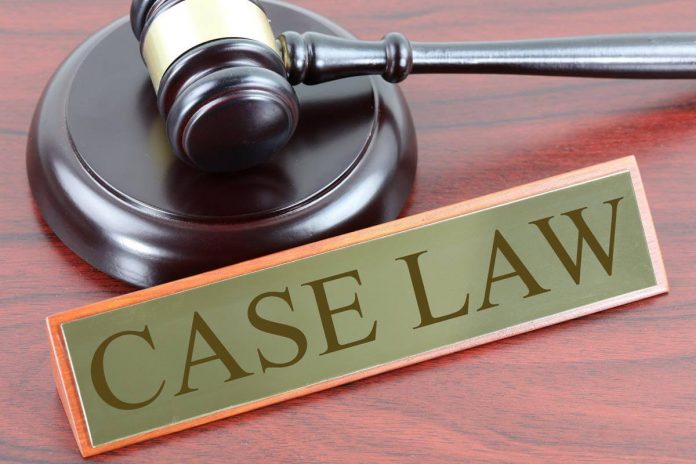This article is authored by Nidhi Bajaj. The article presents a case analysis of the famous case of Brown v. Kendall(1850) which established the necessity of proving negligence for imposing liability for accidental injury. The case shifted the burden of proving negligence on the plaintiff rather than leaving it on the defendant to prove the absence of negligence.
This article has been published by Sneha Mahawar.
Table of Contents
Introduction
Case Name: Brown v. Kendall
Citation: 60 Mass. 292, 1850 WL 4572 (Mass.)
Decided by: The Supreme Judicial Court of Massachusetts
The case constituted an action of trespass for assault and battery. This was one of the first cases wherein the ‘reasonable person’ standard for negligence was applied by the court. It was held that the plaintiff could not recover any damages unless he can prove that the act of the defendant who injured him was intended to cause harm to the plaintiff or that the harm was the result of the defendant’s failure to use ordinary care.
Facts of the case
Two dogs, one owned by the plaintiff and the other owned by the defendant were fighting. Defendant, in an attempt to separate them, started beating the dogs with a stick. The plaintiff was looking on from a distance. The plaintiff took a step or two towards the dogs and the dogs approached the place where the plaintiff was standing. The defendant retreated backwards from before the dogs, striking them as he retreated. With his back towards the plaintiff, the defendant raised the stick over his shoulder to hit the dogs and the stick accidentally hit the plaintiff’s eye, causing severe injury to him. The plaintiff filed an action of trespass for assault and battery against the defendant George Kendall, who died during the pendency of the suit and therefore, his executrix was summoned in. It is pertinent to note that the plaintiff omitted to charge the defendant with either intent or negligence.
The trial judge instructed the jury that the defendant is liable for trespass whether or not the intent was absent unless he could prove that he exercised extraordinary care which would entitle him to the defence of inevitable accident. The defendant failed to persuade the jury, and the judgment was given in favour of the plaintiff. Thereafter, the defendant filed an appeal in the Supreme Judicial Court of Massachusetts.
Issues raised
- Whether it was necessary/lawful/proper for the defendant to interfere in the fight between the dogs?
- Whether such interference by the defendant, if called for, was made properly?
- What degree of care was required to be exercised by the defendant on the occasion?
- Whether an individual, in the course of doing a lawful act, is required to use more than ordinary care in order not to be liable for injuries caused to another party as a result of the act?
- How far and under what qualifications can a party by whose unconscious/unintentional act damage is caused to another, be held responsible for it?
Submissions before the Trial Court
- The defendant requested the judge to instruct the jury that the plaintiff would not be entitled to recover if at the time of the blow-
- both the plaintiff and defendant were using ordinary care, or
- the defendant was using ordinary care and the plaintiff was not, or
- both plaintiff and defendant were not using ordinary care.
- A further request was made by the defendant to the trial judge to instruct the jury that if the plaintiff was using ordinary care and the defendant was not, the plaintiff could still not recover under the circumstances. And the burden of proof in all the above propositions shall lie on the plaintiff.
- Defendant alleged that the injury was accidental and unavoidable in the circumstances of the case.
Judgment
Decision of the Trial Court
While declining to give instructions as requested by the defendant to the jury, the judge left the case to the jury under the following instructions-
- That,
- if the beating of dogs was a necessary act on part of the defendant or if he was duty-bound to separate the dogs, and
- he was doing so in a proper manner, and
- he exercised ordinary care at the time of the blow.
then the defendant was not to be held responsible.
- That,
- if the beating was not a necessary act;
- if the defendant was not duty-bound to separate the dogs, but might with propriety interfere or not as he chose
then the defendant was responsible for the consequences of the blow unless he exercised extraordinary care and so the accident was inevitable.
- That if the plaintiff did not exercise ordinary care at the time he met with the injury, he cannot recover any damages. This rule shall apply irrespective of whether the defendant needed to interfere in the fight of dogs and attempt to separate them.
- If the jury believes that the defendant was duty-bound to interfere, then the burden of proving negligence on the part of the defendant and that the plaintiff exercised ordinary care lies on the plaintiff.
- In case the jury believes that the act of interference by the defendant in the fight was unnecessary, then the burden of proving extraordinary care on the part of the defendant, or want of ordinary care on the part of the plaintiff shall lie on the defendant.
The Jury gave the verdict in favour of the plaintiff and the defendant challenged the same in the Massachusetts Supreme Judicial Court alleging exceptions.
Decision of the Massachusetts Supreme Judicial Court
Chief Justice Shaw who wrote the judgment, gave the following decision—
- While acknowledging that the facts set forth by the defendant in his bill of exceptions rule out the supposition that the blow inflicted on the plaintiff by the defendant was intentional, the Court held that the act of the defendant of parting the dogs was lawful and proper and which the defendant might do by using proper and safe means. And if while doing so, the defendant had exercised all due care and taken all proper precautions keeping in mind the urgency of the situation to avoid others from being hurt, and injury is caused to the plaintiff, then the defendant was not liable for such injury.
- It is for the plaintiff to prove that the defendant did not exercise due care. Moreover, the Court also held that if at the time of the blow, both the plaintiff and defendant were not exercising due care, then in such a case also, the plaintiff cannot recover any damages unless he proves that the damage/injury was caused wholly by the act of the defendant and that there was no contributory negligence on his part.
- If the injury is unavoidable and the conduct of the defendant is not blameworthy, then he will not be liable unless the plaintiff has evidence to show that the intention of the defendant was unlawful or that the defendant was at fault.
- The Court relied on the case of Wakeman v. Robinson(1823), wherein it was held that no action can be supported for an injury caused due to a purely accidental casualty that has occurred while doing a lawful act.
- The Court held that the instructions as requested by the defendant ought to have been given to the jury by the judge i.e. that the plaintiff could not recover if, at the time of blow, both plaintiff and defendant were using ordinary care, or that the defendant was using ordinary care and the plaintiff was not, or that both plaintiff and defendant were not using ordinary care.
- The Court also delved into the meaning of the term ‘ordinary care’ stating that what constitutes ordinary care depends on case to case basis and shall vary according to the circumstances of a case. Generally, ‘ordinary care’ means such degree of care as will be exercised by a prudent man as required by the exigencies of a particular case to guard against any probable danger.
- It was held that for the defence of inevitable accident to be available, it has to be shown that it was such an accident that the defendant could not have avoided it by using such degree of care as demanded by the exigencies of the situation and in the circumstances in which he was placed.
- The Court held that the instructions given to the jury by the trial judge were not in accordance with the law. Relying on the case of Powers v. Russell(1872) and Tourtellot v. Rosebrook(1846), the Court held that the act of hitting by the defendant was unintentional and was done in the doing of a lawful act, and thus the burden to prove the want of due care was on the plaintiff.
- The Court rejected the view of the trial judge that the burden of proof is on the defendant. The court held that such a view is incorrect and that the burden of proving the facts that are essential to enable the plaintiff to recover damages is on the plaintiff. Hence, it was held that the effect of the rule of burden of proof is that whether the proof comes from the plaintiff or defendant or is direct or circumstantial, if it appears that the defendant’s act was lawful and in doing so, he hurt the plaintiff unintentionally, then the plaintiff cannot recover unless the jury is satisfied that the there is some negligence, fault, carelessness, or want of prudence on part of the defendant.
- The Court ordered a new trial.
Other observations
The Court observed that some of the confusion in the cases like the one at hand arises out of the question of whether, under the common law, a party should seek remedy (assuming that the party has such remedy) in an action of the case or trespass. The Court referred to the case of Leave v. Bray(1803) and Huggett v. Montgomery(1936), wherein it has been held that when the injury or damage caused to the party is the immediate effect of the act of the defendant, then an action of trespass will lie and where the damage is consequential to the act of the defendant, then the proper remedy is a case.
The Court expressed the view that these decisions are no authority to hold that the damage caused by a direct act of force from another is sufficient to maintain an action of trespass, whether the act was lawful or unlawful, and neither willful, intentional, or careless.
Analysis
In this case, the defence of inevitable accident and the conditions under which such defence was available were discussed. Both the trial judge and Chief Justice Shaw of the Supreme Judicial Court held that the defence of inevitable accident will depend on the adequacy of care exercised by the defendant. However, both the judges differed on the conceptual status of the issue of required care. The Trial judge interpreted the issue of required care as an exception to the liability, the burden of proving which shall lie on the defendant. However, Chief Justice Shaw converted the issue of the defendant’s failure to exercise ordinary care into a new premise of liability, to be proven by the plaintiff, thus signalling an end to direct causation as a rationale for prima facie liability.
The case, therefore, laid down that for admitting ignorance as an excuse, ordinary care should suffice instead of extraordinary care and it is for the plaintiff to prove the absence of such care on part of the defendant.
Conclusion
After this case, the threshold for fixing liability became as to whether the defendant acted with ordinary care and prudence under all the circumstances. This decision constitutes one of the earliest clear statements or application of the rule that ‘liability must be based on legal fault’ i.e. a defendant is to be held liable only if he was at fault. The case thus eradicated the notion of liability without fault from American law.
References
- https://cyber.harvard.edu/torts3y/readings/fletcher.html
- https://encyclopedia.lexroll.com/encyclopedia/brown-v-kendall/
- http://moglen.law.columbia.edu/twiki/pub/EngLegalHist/MitchellAllestry/Brown_v_Kendall.pdf
- https://cite.case.law/mass/60/292/
- https://core.ac.uk/download/pdf/216745518.pdf
- https://theblackletter.co.uk/2018/03/10/brown-v-kendall/
- https://digitalcommons.law.uw.edu/cgi/viewcontent.cgi?article=1831&context=wlr
Students of Lawsikho courses regularly produce writing assignments and work on practical exercises as a part of their coursework and develop themselves in real-life practical skills.
LawSikho has created a telegram group for exchanging legal knowledge, referrals, and various opportunities. You can click on this link and join:
Follow us on Instagram and subscribe to our YouTube channel for more amazing legal content.
 Serato DJ Crack 2025Serato DJ PRO Crack
Serato DJ Crack 2025Serato DJ PRO Crack











 Allow notifications
Allow notifications



